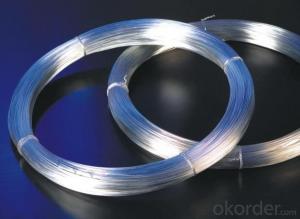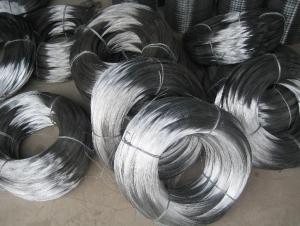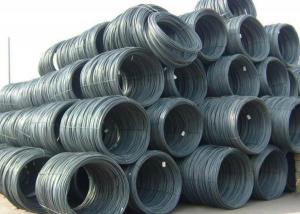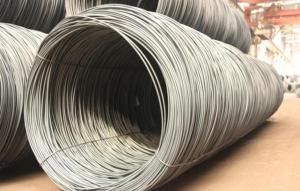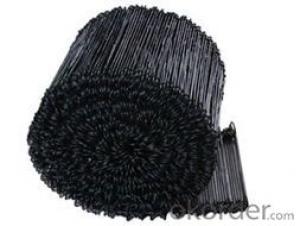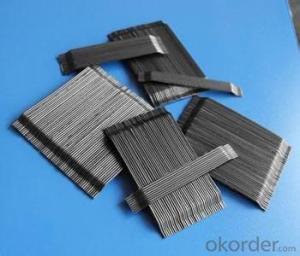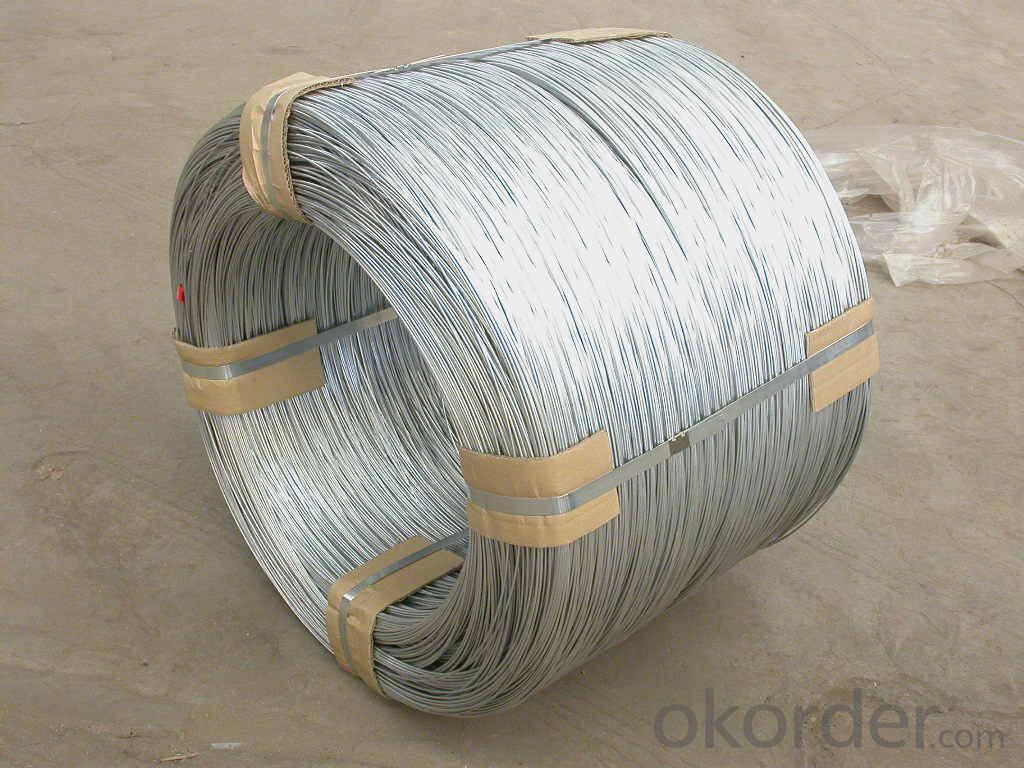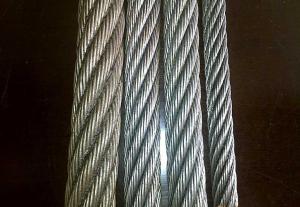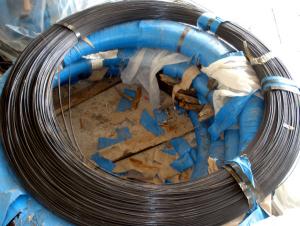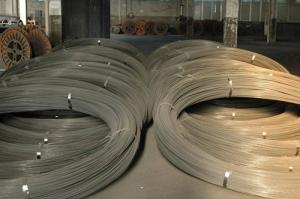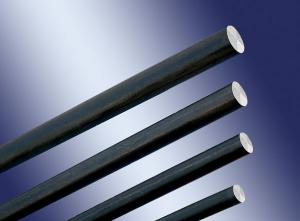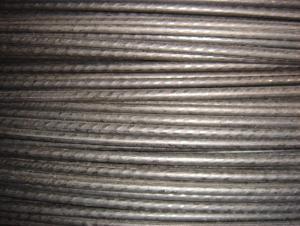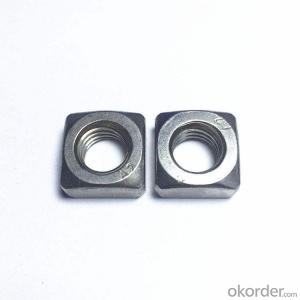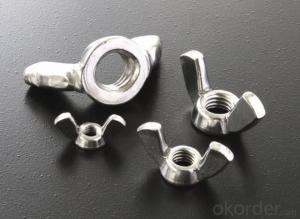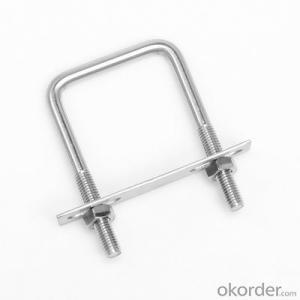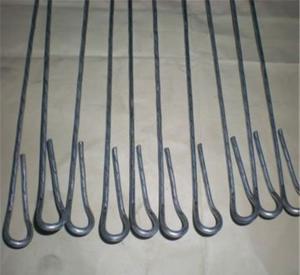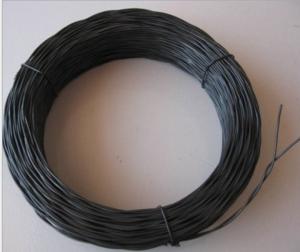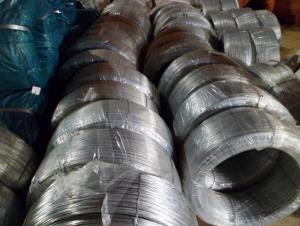Hot Dipped Galvanized Iron Wire For Chain Link Fence
- Loading Port:
- China Main Port
- Payment Terms:
- TT OR LC
- Min Order Qty:
- -
- Supply Capability:
- -
OKorder Service Pledge
OKorder Financial Service
You Might Also Like
Packaging & Delivery
| Packaging Detail: | 1. Inside with plastic film, outside weaving bag. 2. Inside with plastic film, outside hessian cloth. |
| Delivery Detail: | 15~30 days |
Specifications
1. Material is Q195(C is 0.06% ~ 0.12%)
2. Zinc coating is 40/m2 ~ 60g/m2
3. Tensile strength is 400N ~ 600N
Hot-Dip Zinc-Plating Iron Wire
Material: super carbon steel Processing by drawing, hot-dip zinc-plating Standard wire gauge from 8# to 24# Thick zinc-coating layer Super in corrosion resistance Firm coating layer Custom size available
Hot dipped galvanized wire and Electro galvanized wire | |
Metric system | British System |
4.0mm-0.30mm | BWG8-BWG30 |
Tensile strength: 30-55kg/mm2 | |
Zinc coating: 20-32g/m2 6-295g/m2 | |
Packing: inside polyethylene film, outside PVC film or hessian cloth | |
- Q:I dont understand it I am trying to get a 1ohm load on a 2ohm dvc speaker but cant figure out how to tell if the wire you connect in the postive terminal on the sub in a neg wire or positive how do you tell what the gray line is on this diagram positive or negetive and how to tell. thanks
- this is what you will desire to do. merely connect the beneficial to beneficial terminals on the subs themselves and the negatives to negatives mutually besides. you will % 4 man or woman wires for that when which connect the subs as much as the container with one portion of the terminals to the beneficial and unfavourable wires and do the resembling the different sub. Then connect the two one among them to the comparable terminal on the amp and that's a a million ohm load.
- Q:You have a 3 foot wide wire, vs a .3 inch wire. They are equal length. There is 3 volts going through each wire, to power your 1 volt LED. So, would the 3 foot wide wire have less resistance ? I don't even think it would work.
- When I started out, I found that the water analogy was helpful. Water flow (through a pipe) represents the electrons flowing (= current). The pipe represents the wire. It's hard to push a high flowrate of water through a small pipe (say like a drinking straw), but easy through a large-diameter pipe. The small pipe shows high resistance to flow, the large pipe shows little resistance to flow. Electrical current works the similarly, for electrons flowing through the wire. In electrical circuits, voltage corresponds to pressure. Are you aware that to push 1A through a wire of resistance 1 ohm requires a voltage drop across the wire of 1V? And that if you increase that voltage to 2V (from 1V), twice the current will flow (=2A), even though the resistance stays the same? If you had two of those wires (connected in parallel), you could push 1A through each wire by applying 1V across each wire. That would total 2A without having to increase the voltage. Well, that essentially is what a larger-diameter wire is, it's the equivalent of taking two (or more) smaller wires and melding their cross sections together into that of a single wire. But since it now takes only 1V to push 2A instead of 2V, it appears that the resistance is half as much, as in 0.5ohms, when using both wires. From that you can conclude that larger-diameter wires have lower resistance. Hope that helps. Later you will discover that the water analogy doesn't match perfectly well since its pressure relationship is highly non-linear, whereas the electrical relationship tends to be highly linear. Also, we generally don't push water back-and-forth in pipes the way some electrical circuits use alternating current. That's a heads-up that the water analogy will fail to explain some of the electrical things you'll run into.
- Q:in hooking up a hot wire from the battery to a toggle switch inside a vehicle, i ran a seperate ground wire to the body, there are 2 wires coming from the unit i need to hook to the toggle switch.how do i test to see which one of those is a hot wire? i am not too smart at this. ty kindly
- Depends on what your hooking up? Look at the unit where the wires go in and there may be a +(hot) or -(ground) marking, and the ground wire is usually black and the hot is usually red,orange or yellow.
- Q:currently I have 2 12woofers wired to a single amp with 2 gauge wiring. Will it make a noticable difference if I upgrade the wiring to 0 gauge?
- you can try Rockford Fosgate web site for wire calculation. just enter your best guess.
- Q:Which is live and which is not, there is a black wire and a blue wire?
- The oven is rated at 220 volts they are both hot conductors.
- Q:When was the hot-wire anemometer invented? and who was it?
- Sir Charles Wheatstone in 1843 modern anemometer use ultrasound hot wire sensors are used as mass air flow but did not find original usage! Guru
- Q:me and my friend were doing a circuit challenge and we did the same circuit but she used thicker wires. does it make a difference?
- It depends on what the resistance of the rest of the circuit was. The resistance of relatively short lengths of really thin wire would be less than 2 ohms, probably less than 1 ohm. Thicker wire would be maybe 1/4 ohm. So only if the circuit's components were in the neighborhood of 25 ohms or less, would the difference in thin and thick wires have a real significant affect on the circuit.
- Q:I NEED TO CHECK IF A WIRE IS GOOD ON A FITNESS MACHINE. HOW DO I KNOW IF ITS GOOD? WHAT SHOULD THE OHMS BE?
- any wire, unless it is very long or very thin, will measure zero ohms on an ordinary ohmmeter. But check for continuity does not completely check a cable. Most cables have several conductors in them, so you need to check each one end to end, and check resistance between the wires. Between them, it should measure open or infinite ohms. But the cable could still be bad. Tell us the details please. .
- Q:While updating the parents basement we needed to replace a very very old 3 way switch. However, the wiring to the Fluorescents seems extreme to me. Here is how i can describle the layout. Panel - junction box - double splice (one to light fixture and one to threeway switch below it)-. From that threeway switch 12-3 wiring to upstairs landing with other threeway switch resides. How should I make my connections to switches? If the other swtiches were not so old I would just copy them.
- A hot wire from the panel to the first three way switch on the common screw. Two runner wires between the two switches on the other two screws. A wire from the common screw on the second switch to the hot wire on the light fixtures. A neutral wire to the light fixtures from the panel. Look at Bert's pictures.
- Q:I purchased a wiring harness to install an aftermarket receiver in my 2000 Chevy Cavalier, also. I have lost the insert that came with the harness and as such I am at a loss as to how to wire my receiver to the harness.help
- 2000 Chevrolet Cavalier Car Stereo Radio Wiring Diagram Car Radio Constant 12v+ Wire: Orange Car Radio Switched 12v+ Wire: Ignition Switch (The radio harness does not provide a switched power source. Run a wire from the Ignition Switch.) Car Radio Ground Wire: Black Car Radio Illumination Wire: Gray Car Stereo Dimmer Wire: N/A Car Stereo Antenna Trigger: Pink Car Stereo Amp Trigger Wire: N/A Car Stereo Amplifier Location: N/A Front Speakers Size: N/A Front Speakers Location: N/A Left Front Speaker Positive Wire (+): Tan Left Front Speaker Negative Wire (-): Gray Right Front Speaker Positive Wire (+): Light Green Right Front Speaker Negative Wire (-): Dark Green Rear Speakers Size: N/A Rear Speakers Location: N/A Left Rear Speaker Positive Wire (+): Brown Left Rear Speaker Negative Wire (-): Yellow Right Rear Speaker Positive Wire (+): Dark Blue Right Rear Speaker Negative Wire (-): Light Blue
1. Manufacturer Overview |
|
|---|---|
| Location | |
| Year Established | |
| Annual Output Value | |
| Main Markets | |
| Company Certifications | |
2. Manufacturer Certificates |
|
|---|---|
| a) Certification Name | |
| Range | |
| Reference | |
| Validity Period | |
3. Manufacturer Capability |
|
|---|---|
| a)Trade Capacity | |
| Nearest Port | |
| Export Percentage | |
| No.of Employees in Trade Department | |
| Language Spoken: | |
| b)Factory Information | |
| Factory Size: | |
| No. of Production Lines | |
| Contract Manufacturing | |
| Product Price Range | |
Send your message to us
Hot Dipped Galvanized Iron Wire For Chain Link Fence
- Loading Port:
- China Main Port
- Payment Terms:
- TT OR LC
- Min Order Qty:
- -
- Supply Capability:
- -
OKorder Service Pledge
OKorder Financial Service
Similar products
New products
Hot products
Related keywords
